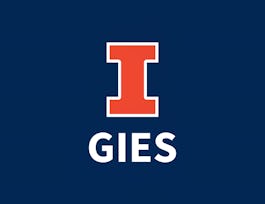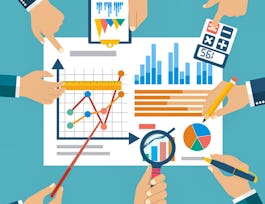The core of the first course is to learn how companies record total costs and calculate unit costs for their individual products or services. For example, how can a car manufacturer figure out the costs of an individual car series? During the first weeks, participants learn what costs are and how to distinguish them from expenses or cash flows. Participants will understand how companies record total costs and distinguish important cost types such as material costs, personnel costs, or depreciation. At the core of their cost-accounting system, companies allocate overhead costs to individual products. We show participants how to allocate the costs incurred to the company's products and introduce them to the most important methods and challenges of product costing.



Basics of Cost Accounting: Product Costing
This course is part of Cost Accounting Specialization



Instructors: Gunther Friedl
Sponsored by Syrian Youth Assembly
13,314 already enrolled
(139 reviews)
Recommended experience
What you'll learn
You will learn how to make your company's cost structure transparent and how to record and calculate costs.
You will learn methods of product costing, i.e., how companies calculate costs of their products and services.
You will learn to decide which product costing system is most suitable for your company’s production program and production type.
You will learn how to determine overhead rates for the allocation of overhead costs to products.
Skills you'll gain
Details to know

Add to your LinkedIn profile
34 assignments
See how employees at top companies are mastering in-demand skills

Build your subject-matter expertise
- Learn new concepts from industry experts
- Gain a foundational understanding of a subject or tool
- Develop job-relevant skills with hands-on projects
- Earn a shareable career certificate


Earn a career certificate
Add this credential to your LinkedIn profile, resume, or CV
Share it on social media and in your performance review

There are 4 modules in this course
Welcome to Cost Accounting! In this module, we will introduce you to the basic concepts of cost accounting. You will learn what cost accounting is and how cost accounting relates to corporate accounting. Thereafter, you will get familiar with some basic cost terms that are essential for cost accountants. Finally, we will introduce you to a framework that distinguishes three sub-systems of cost accounting. This framework will guide us through the following modules.
What's included
8 videos6 readings3 assignments1 discussion prompt1 plugin
In this module, we will introduce you to cost-type accounting - the first of the three cost accounting sub-systems. Cost-type accounting helps companies to make their cost structure transparent. It gives companies an overview of which costs have been incurred. We will take a closer look at three important cost items namely material costs, personnel costs, and machine costs. You will learn how companies record and calculate them.
What's included
8 videos5 readings7 assignments
In this module, we will dive into cost-center accounting. Cost-center accounting creates transparency about where, i.e. in which cost center, the overhead costs of a company have been incurred. It connects cost-type accounting with product costing by performing three allocation steps: First, overhead costs from cost-type accounting are assigned to cost centers. However, ultimately cost accountants want to assign the costs to cost objects. Because this is easier for costs of production-related cost centers ("direct cost centers") than for costs of "indirect cost centers" such as the IT or the canteen, companies allocate overhead costs from indirect to direct cost centers first. Finally, they determine overhead rates for the allocation of overhead costs from direct cost centers to cost objects. In this module, we will introduce you to each of these steps.
What's included
10 videos2 readings11 assignments
In this module, we introduce you to product and service costing. Product and service costing provides companies with information about the costs of individual products or services. It is the final of the three cost accounting sub-systems. We will sometimes just refer to product and service costing as "product costing", but of course some companies offer physical products while others offer services. We explain how companies design product costing systems and we make you familiar with important methods of product costing. We also discuss how well the costing methods are suited for different production processes and program types. To this end, we will distinguish "job shop production" and "mass and batch production".
What's included
12 videos2 readings13 assignments1 discussion prompt3 plugins
Instructors

Offered by
Why people choose Coursera for their career




Learner reviews
139 reviews
- 5 stars
74.10%
- 4 stars
19.42%
- 3 stars
4.31%
- 2 stars
0.71%
- 1 star
1.43%
Showing 3 of 139
Reviewed on Mar 4, 2022
Perfect Course.. with very good examples.. you will earn a lot of knowledge the instructor is great. also, they are very responsive in the forum, Thanks to all the instructor's team!
Reviewed on Aug 14, 2023
Thank you for the instructors and Coursera for offering this course.
Reviewed on Mar 9, 2022
Great course! Very informative and easy to follow, but still challenging.
Recommended if you're interested in Business

University of Illinois Urbana-Champaign

University of Virginia

University of Illinois Urbana-Champaign

Dubai College of Tourism

Open new doors with Coursera Plus
Unlimited access to 10,000+ world-class courses, hands-on projects, and job-ready certificate programs - all included in your subscription
Advance your career with an online degree
Earn a degree from world-class universities - 100% online
Join over 3,400 global companies that choose Coursera for Business
Upskill your employees to excel in the digital economy



